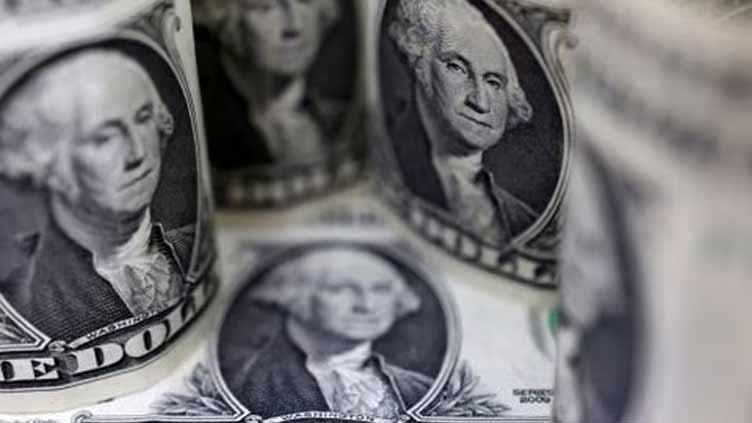Dollar stands tall as US economic resilience trumps fiscal uncertainty

Business
Yields on US Treasuries also remained elevated in early Asia trade
SINGAPORE (Reuters) - The dollar was perched near a four-week high on Thursday, shrugging off a U.S. credit rating downgrade that cast doubt on the country's fiscal outlook, and instead got a leg up from strong private payrolls data.
Data out on Wednesday showing U.S. private payrolls rose more than expected in July boosted the greenback, as the figures pointed to continued labour market resilience which is likely to keep U.S. rates higher for longer.
That sent the dollar index to its highest since July 7 in the previous session. It was last at 102.56, not far form Wednesday's peak of 102.78.
Yields on U.S. Treasuries also remained elevated in early Asia trade, with the benchmark 10-year Treasury yield last at 4.0977%, after jumping to its highest since November at 4.1260% on Wednesday.
The euro gained 0.06% to $1.0944, recouping some of its losses from the previous session.
"Strong ADP numbers, insofar as it is taken to be a gauge of non-farm payrolls, ostensibly invoked a good deal of upside in U.S. Treasury yields and the U.S. dollar," said Vishnu Varathan, head of economics and strategy at Mizuho Bank.
The closely-watched U.S. nonfarm payrolls report is due on Friday.
Other traders say that a fresh wave of risk aversion after rating agency Fitch downgraded the U.S. government's top credit rating also sparked some safe-haven buying, lending support to the dollar.
The move, which drew angry responses from the White House and left some investors dumbfounded, had sparked a selloff in Wall Street in the previous session.
The risk-off sentiment also hurt the risk-sensitive Australian and New Zealand dollars, which had each tumbled more than 1% on Wednesday.
"Risk assets have been more impacted by the Fitch downgrade," said Tina Teng, market analyst at CMC Markets. "The U.S. dollar actually strengthened against most other currencies (and) there were risk-aversion trades across all the asset classes."
Elsewhere, sterling added 0.02% to $1.2714 ahead of the Bank of England's monetary policy decision later on Thursday, where the central bank is expected to raise interest rates to a 15-year high of 5.25% from 5%.
The yen edged marginally higher to 143.31 per dollar, though languished near an over three-week low of 143.545 hit earlier in the week.
The Japanese currency has come under pressure this week even as the Bank of Japan on Friday loosened its grip on interest rates. Policymakers have also been quick to pushback against speculation that the move was a prelude to an imminent exit of the central bank's ultra-easy policy.
"The weakness has likely been driven by unwinds of more significant policy normalisation trades," said Karen Fishman, a senior strategist at Goldman Sachs.
The Aussie was last 0.14% higher at $0.65465, after initially extending its gains on data which showed China's services activity expanded at a slightly faster pace in July.
The kiwi fell 0.02% to $0.6079.


